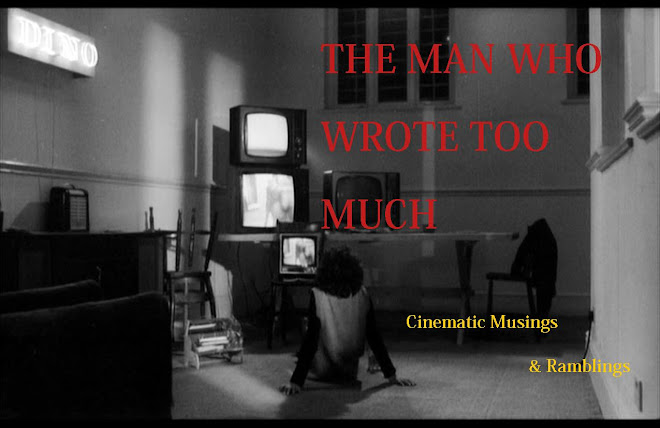As “the world’s most photographed city” Los Angeles is a place whose history seems to have been created through the lens of the filmmakers who chose to decamp there. As a resident Angelino, Anderson looks to dispel many of the myths that seem to have become part of the regular vernacular when considering the city, and searches for an image of the city lived in by the “39 out of every 40 residents of Los Angeles who aren’t part of the movie industry”.
Therefore rather than a personalised poetic elegy like that presented by Davis, Anderson (usually a tutor at CalArts) presents a heavily politicised audio/visual dissertation that considers the ramifications of living in a city whose double identity has helped in the deformation and reconstruction of large swathes of it, helping create the misshapen segregated beast that the “City of Angels” can be seen as today.
Like a cinematic equivalent of Grandmaster Flash and 2ManyDJ’s, Anderson builds his documentary through the (un-commissioned) employment of hundreds of film clips remixed together to paint a picture of a city whose cinematic representation has distorted it’s geography, history and even its name (though Anderson’s complaints about the abbreviation of the city’s title to L.A. does come across as overly fastidious). Voiceover commentary is provided by Encke King, whose relaxed and muted tone always threatens to veer towards dull though somehow contains just enough bite to keep you attentive for the near three hours duration.
The range of clips employed by Anderson is expansive and to be honest quite superlative. From the obvious and much revered documents of the city seen in the likes of Roman Polanski’s Chinatown (1974), Ridley Scott’s Blade Runner (1982) and Robert Altman’s Short Cuts (1993) via unexpected delights such as Michelangelo Antonioni’s chimerical Zabriskie Point (1970), Peter Bogdanovich’s debut Targets (1968) and Hal Halicki’s car destruction orgy Gone in 60 Seconds (1974), through to even referencing trash that would be otherwise consigned to an unloved eternity at the bottom of supermarket sale bins such as Virtuosity (1995), Death Wish 4 (1987) and Sly Stallone’s self penned ego massage Cobra (1986).
Anderson gradually layers depth into his essay, beginning with the shallow surface examination the use of Los Angeles’ famous art-deco architecture within films. Before really hitting its stride with a fascinating dissection of the history of downtown’s Bunker Hill district. Anderson finally bares his teeth in the second half with an angry deconstruction of the false histories created for the city.
Even with a running time that makes the documentary seem as sprawling and over-bearing as the city itself, Los Angeles Plays Itself inevitably contains omissions. The most obvious cinematic omission would seem to be Tarantino’s Pulp Fiction (1994) a film that like Tarantino’s other early work, happily charts a Los Angeles that lives lights years away from the Hollywood Hills crowd. Though it’s representation of the city as one of small time crooks, bric-a-brac store dwelling rapists and pop-culture hitmen will probably still make Anderson’s blood boil.
As the film draws to a close one also begins to feel there is a large hole in the documentary with its lack of in-depth reference to the multi-ethnic make-up of the city outside of brief reference’s to the Watts riots and the Rodney King beating. This is made up for though with a fantastic closing segment that rather than taking the obvious route of examining what Anderson feels to be the exploitative and unfair representations of south-central Los Angeles as urban guerrilla warfare zones as seen in Boyz in the Hood (1991), and the post ’92 riot crowd such as Menace II Society (1993). He instead pays loving tribute to the black independent cinema movements of the 1970’s, covering such films as Charles Burnett’s much admired Killer of Sheep (1977).
Far from attempting to appeal to the masses Anderson has created a document by a film fanatic and very much for film fanatics. If the subject matter may occasionally appear daunting, a dry as Death Valley humour helps the film along, from comparing the punctilious production of hardcore right-wing cop show Dragnet to the methods employed by Art-House deities Bresson and Ozu, to even admitting the documentary’s title is lifted from an early seventies gay porn flick. Anderson has created a work that any self-respecting film student really should hunt out*.
*and hunt out you will have to do, as due to the abundance of unlicensed film clips this is unlikely to ever see a DVD release. Of course searching the darker more legally dubious corners of the internet may help in yielding positive results, not that I could ever promote such ideas.....

+2.JPG)
+3.JPG)
+4.JPG)
No comments:
Post a Comment